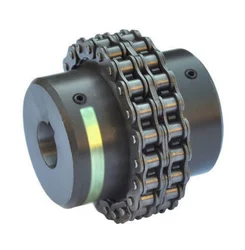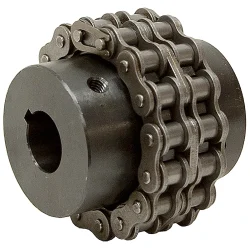Ürün Açıklaması
Ürün Açıklaması
Ürün Parametreleri
| ürün | Kc Serisi Çelik Döküm Esnek Zincir Dişli Makaralı Zincir Bağlantısı test tezgahları için |
| malzeme | paslanmaz çelik, demir, alüminyum, bronz, karbon çeliği, pirinç vb. |
| boyut | ISO standardı, müşteri gereksinimleri |
| tür | Genişleme kılıfı Z1/Z2/Z3/Z4/Z5/Z6/Z7/Z8/Z9/Z10/Z11/Z12/Z13/Z14/Z18/Z19 |
| DELİK | Bitmiş delik, Pilot delik, Özel istek |
| yüzey işleme | Karbürleme ve Söndürme, Temperleme, Diş yüzeyi yüksek söndürme Sertleştirme, Temperleme |
| İşleme Yöntemi | Kalıplama, Tıraşlama, Hobbing, Delme, Diş Açma, Raybalama, Manuel Pah Kırma, Taşlama vb. |
| Isıl İşlem | Quenching & Tempering, Carburizing & Quenching, High-frequency Hardening, Carbonitriding…… |
| Paket | Ahşap Kasa/Konteyner ve palet veya siparişe göre üretim |
| Sertifika | ISO9001, SGS |
| İşleme Süreci | Dişli Frezeleme, Dişli Şekillendirme, Dişli Broşlama, Dişli Tıraşlama, Dişli Taşlama ve Dişli Taşlama |
| Uygulamalar | Oyuncak, otomotiv, enstrüman, elektrikli ekipman, ev aletleri, mobilya, mekanik ekipman, günlük yaşam ekipmanları, elektronik spor ekipmanları, temizlik makineleri, market/otel ekipman malzemeleri vb. |
| Test Ekipmanları | Rockwell sertlik test cihazı 500RA, Çift gözenekli cihaz HD-200B ve 3102, Dişli ölçüm merkezi cihazı CNC3906T ve diğer Yüksek hassasiyetli tespit ekipmanları |
atölye ve ekipman
Üretim süreci
Sertifikalar
Avantajlarımız
1. Öncelikli Kalite
2. Dürüstlük Temelli Yönetim
3. Hizmet Odaklılık
4.150+ gelişmiş ekipman
5.10000+ metrekare fabrika alanı
6.200'den fazla olağanüstü çalışan
7.90% çalışanımızın fabrikamızda 10 yıldan fazla çalışma deneyimi bulunmaktadır
8.36 teknik personel
9. ISO 9001 sertifikası, SGS
10. Özelleştirme desteği
11. Mükemmel satış sonrası hizmet
Nakliye
numune siparişleri teslimat süresi:
Her zamanki gibi 10-15 iş günü
Yoğun sezonda 15-20 iş günü
büyük sipariş teslim süresi :
Her zamanki gibi 20-30 iş günü
Yoğun sezonda 30-40 iş günü
SSS
1. Neden diğer tedarikçilerden değil de bizden ürün satın almalısınız?
Biz dişli üretiminde 32 yıllık deneyime sahip bir üreticiyiz, helezon dişli, konik dişli, mahmuz dişli ve taşlama dişlisi, dişli mili, zamanlama kasnağı, kremayer, zamanlama kasnağı ve diğer şanzıman parçaları gibi çeşitli dişlilerin üretiminde uzmanlaşmış durumdayız. 150'den fazla gelişmiş ekipman, 200'den fazla mükemmel çalışan ve 36 teknik personel bulunmaktadır. Dahası, ISO9001 ve SGS sertifikamız var.
2. Küçük siparişleri kabul ediyor musunuz?
Sipariş ettiğiniz rulmanlar standart ölçülerimizde ise 1 adet bile kabul ediyoruz.
3. Teslimat ne kadar sürer?
A: Küçük siparişler genellikle 10-15 iş günü, büyük siparişler genellikle 20-35 gün sürer, bu sipariş miktarına ve standart boyutta olup olmadığına bağlıdır.
/* March 10, 2571 17:59:20 */!function(){function s(e,r){var a,o={};try{e&&e.split(“,”).forEach(function(e,t){e&&(a=e.match(/(.*?):(.*)$/))&&1

Zincir kaplinleri paralel hizalama hatalarını telafi edebilir mi?
Evet, zincir kaplinleri, bağlı miller arasındaki belirli bir paralel hizalama yanlışlığını karşılamak üzere tasarlanmıştır. Paralel hizalama yanlışlığı, iki milin eksenlerinin mükemmel bir şekilde hizalanmadığı ve birbirine paralel ancak mesafeli olarak çalıştığı durumu ifade eder.
Zincir kaplinleri, belirli miktarda paralel hizalama hatasını tolere etmelerini sağlayan bir miktar doğal esnekliğe sahiptir. Esneklik, öncelikle şaftlar arasındaki küçük paralel yer değiştirmeleri telafi edebilen makaralı zincir tarafından sağlanır. Bu esneklik, kaplin bileşenleri üzerindeki stresi azaltmaya yardımcı olur ve paralel hizalama hatasının varlığında bile düzgün çalışmaya olanak tanır.
Ancak, zincir bağlantılarının paralel hizalama eksikliği açısından sınırlamaları olduğunu belirtmek önemlidir. Belirtilen sınırların ötesinde aşırı paralel hizalama eksikliği artan strese, eşit olmayan yük dağılımına, hızlandırılmış aşınmaya ve olası bağlantı arızasına yol açabilir. Üreticinin teknik özellikleri ve yönergeleri, kullanılan belirli zincir bağlantı için paralel hizalama eksikliğinin kabul edilebilir aralıkta kalmasını sağlamak için izlenmelidir.
Kurulum sırasında doğru hizalama, paralel hizalama hatalarını en aza indirmek için çok önemlidir. Zincir kaplininin ve bağlı makine veya ekipmanın optimum performansını ve uzun ömürlülüğünü sağlamak için miller mümkün olduğunca yakın hizalanmalıdır. Bazı durumlarda, istenen hizalamayı elde etmek için shim veya ayarlanabilir montajlar gibi ek önlemler gerekebilir.
Zincir bağlantısının düzenli denetimi ve bakımı, zamanla ortaya çıkabilecek paralel hizalama sorunlarının belirlenmesi ve ele alınması için de önemlidir. Önemli paralel hizalama hatası tespit edilirse, şaftları yeniden hizalamak için düzeltici önlemler alınmalı veya paralel hizalama gereksinimleri için daha uygun alternatif bağlantı seçenekleri düşünülmelidir.
Özetle, zincir kaplinleri belirli bir paralel hizalama yanlışlığını karşılayabilir, ancak aşırı hizalama yanlışlığından kaçınılmalıdır. Kurulum sırasında uygun hizalama ve üreticinin yönergelerine uyulması, zincir kaplininin ve bağlı makine veya ekipmanın optimum performansını, güvenilirliğini ve uzun ömürlülüğünü sağlamak için önemlidir.

How does misalignment affect chain couplings?
Misalignment in chain couplings can have detrimental effects on their performance and lifespan. Here are some ways in which misalignment can affect chain couplings:
- Increase in Load: Misalignment puts additional load on the coupling components. When the shafts connected by the coupling are not properly aligned, the coupling must compensate for the angular, parallel, or axial misalignment. This increased load can lead to excessive stress and premature wear on the coupling components, such as sprockets, roller chain, and connecting pins.
- Uneven Load Distribution: Misalignment can cause an uneven distribution of load across the coupling. As a result, some sections of the coupling experience higher stresses than others. This uneven load distribution can lead to localized wear and fatigue, reducing the overall strength and reliability of the coupling.
- Reduced Power Transmission: Misalignment affects the efficiency of power transmission through the coupling. When the shafts are not properly aligned, there is increased friction and slippage between the roller chain and the sprockets. This slippage reduces the amount of power transferred from one shaft to another, resulting in a loss of efficiency and a decrease in the overall performance of the machinery or equipment.
- Increased Wear: Misalignment can accelerate wear on the coupling components. The misalignment causes the roller chain to operate at an angle or with excessive tension, causing additional stress and wear on the chain links, sprocket teeth, and connecting pins. The increased wear can lead to chain elongation, loss of engagement with the sprockets, and ultimately, coupling failure.
- Gürültü ve Titreşim: Misalignment often results in increased noise and vibration during operation. The misaligned coupling generates additional vibrations and impacts, leading to excessive noise and potential damage to the coupling and surrounding equipment. These vibrations can also propagate through the connected machinery, affecting its overall performance and reliability.
To mitigate the negative effects of misalignment, it is crucial to ensure proper alignment of the shafts and the chain coupling during installation and periodically check and adjust the alignment as needed. Proper alignment minimizes stress on the coupling components, maximizes power transmission efficiency, and extends the service life of the chain coupling.

What is a chain coupling?
A chain coupling is a mechanical device used to connect two rotating shafts in a power transmission system. It consists of two sprockets or toothed wheels and a roller chain that meshes with the sprocket teeth. The sprockets are mounted on the respective shafts and linked together by the chain, allowing torque to be transmitted from one shaft to the other.
Chain couplings are designed to provide a flexible and reliable connection between shafts while accommodating misalignment between them. They are known for their ability to compensate for angular, parallel, and axial misalignments, making them suitable for a wide range of industrial applications.
The sprockets of a chain coupling typically have hardened teeth that engage with the rollers of the chain. The chain itself is made up of a series of interconnected links, each consisting of two plates joined by pins. The rollers are mounted on the pins, allowing them to rotate freely and mesh with the sprocket teeth.
One of the key advantages of chain couplings is their ability to transmit high torque loads. The engagement between the sprockets and the chain provides a positive drive, allowing for efficient power transfer even in demanding applications. Chain couplings are commonly used in heavy-duty machinery and equipment where large amounts of power need to be transferred, such as conveyors, mixers, crushers, and industrial drives.
Chain couplings also offer flexibility in shaft alignment. They can compensate for angular misalignment, which occurs when the shafts are not perfectly aligned at an angle. Additionally, they can accommodate parallel misalignment, where the shafts are offset from each other, as well as axial misalignment, which refers to the displacement along the axis of the shafts.
Proper lubrication is essential for the efficient operation and longevity of chain couplings. Lubricants such as oil or grease are applied to the chain and sprockets to reduce friction and wear. This helps to prevent heat buildup and ensures smooth rotation and power transmission.
Chain couplings are available in various sizes, configurations, and materials to suit different application requirements. The selection of a chain coupling depends on factors such as torque capacity, speed, shaft diameter, and misalignment tolerance.
In summary, chain couplings provide a flexible, reliable, and high-torque solution for connecting rotating shafts in power transmission systems. They offer the ability to compensate for misalignment, making them suitable for a wide range of industrial applications where efficient power transfer is crucial.


editor by CX 2024-02-06
